String of Turtles (Peperomia prostrata) is a charming trailing houseplant that brings a unique appeal to any indoor space. Belonging to the Piperaceae family and native to Brazil, this herbaceous perennial is loved for its delicate, trailing vines covered with small, round, turtle shell-patterned leaves. Its compact size and captivating foliage make it a favorite among plant lovers.
This guide will provide essential care tips to help your String of Turtles thrive, adding character and greenery to your home.
| Common name | String of Turtles, Trailing Peperomia |
| Botanical name | Peperomia prostrata |
| Family | Piperaceae |
| Species | prostrata |
| Origin | Brazil |
| Plant type | Herbaceous Perennial |
| Flower color | Brown, Copper |
| Leaf color | Green |
| Leaf benefit | Showy |
| Uses | Container |
I. Appearance and Characteristics
Peperomia prostrata is a species of plant in the genus Peperomia. It is endemic to Ecuador. It is sometimes called string of turtles.
The String of Turtles (Peperomia prostrata) is a fascinating, tiny succulent native to Brazilian rainforests that has charmed plant enthusiasts worldwide.
This unique plant thrives in warm climates but also adapts well to average household conditions, making it a popular addition to house plant collections and apartment jungles. With its small, round, turtle-like leaves, the String of Turtles adds a touch of whimsy to any indoor space.
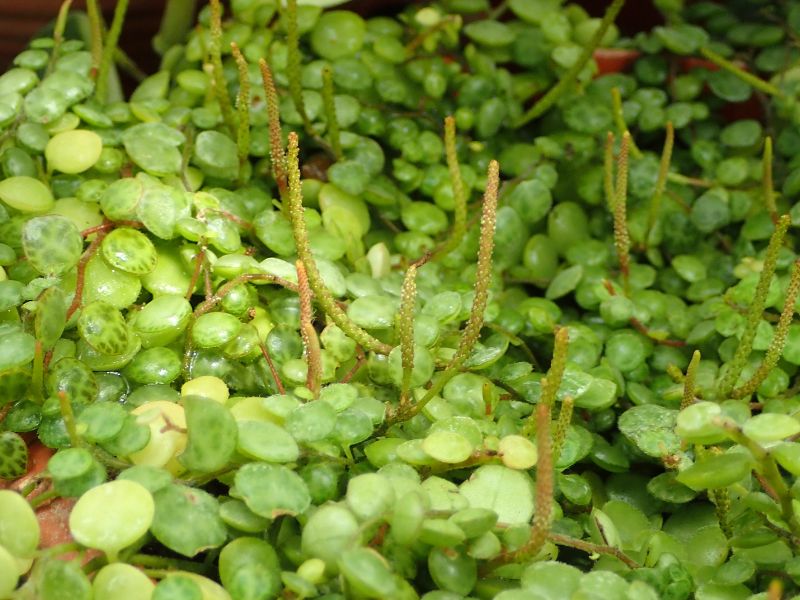
It’s a small perennial plant that has a trailing growth habit. It’s also a slow-growing plant, which makes it perfect for terrariums, hanging baskets, and planters.
But what sets it apart from the rest are its small leaves that have a gorgeous shade of green, with some featuring a unique, turtle-like pattern. The little leaves resemble turtle shells, hence its common name!
II. How to Grow and Care
Sunlight
String of turtles plants love bright indirect sunlight and will thrive in these conditions. Keeping these plants in full sun for too long will damage the leaves, but too little light and they will fail to produce new growth. Because of the vining nature of the plant, make sure light reaches the top of the plant so that it continues to produce new growth. Often, vining plants are placed on high shelves or areas without light, which causes the plant to stop producing new growth. Make sure light reaches all areas of the plant.
Temperature
Your string of turtles plant enjoys a consistent temperature of 68°F to 75°F. It does not like cold temperatures, so avoid placing it near exterior doors or drafty windows, and if you’ve placed it outside during the summer, make sure to bring it inside before temperatures turn chilly.
Humidity
During drier summer months or when a heater is running during the winter, you may want to use a mister or humidifier to increase humidity around the plant, as long as care is taken to ensure that the leaves are not left wet
Watering
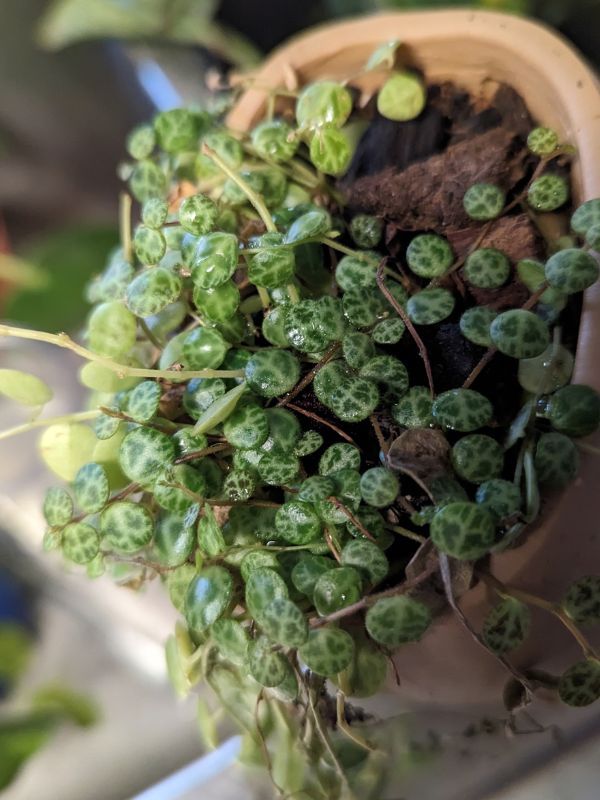
The string of turtles plants prefers slightly moist conditions. The species tends to suffer from overwatering more than they do from dry conditions. Ensure the pot has drainage holes, then water well letting the soil dry out between waterings.
Avoid overwatering by drenching the soil till water runs out the bottom of the pot and the soil is thoroughly moist. Do not water the plant again until the top two inches of soil have dried.
Soil
Even though the string of turtles is semi-succulent, its care requirements differ from those of most succulents. To begin with, succulents thrive in succulent soil or cactus potting mix because it provides adequate airflow and a well-drained environment.
String of Turtles, on the other hand, requires a lot more organic matter to thrive, and the simplest way to ensure this is to plant it in a seed-starting mix with plenty of peat.
It’s important to note that the string of turtles is sensitive to overwatering and can suffer from root rot if the soil is too moist. To prevent this, make sure the soil is completely dry before watering and avoid letting the plant sit in standing water.
Fertilizing
Fertilizing your string of turtles is not necessary, but it can help promote healthy growth. Use a balanced, liquid houseplant fertilizer once a month during the growing season (spring and summer).
Be sure to follow the instructions on the fertilizer bottle and avoid over-fertilizing as this can lead to fertilizer burn and damage the plant.
Pruning
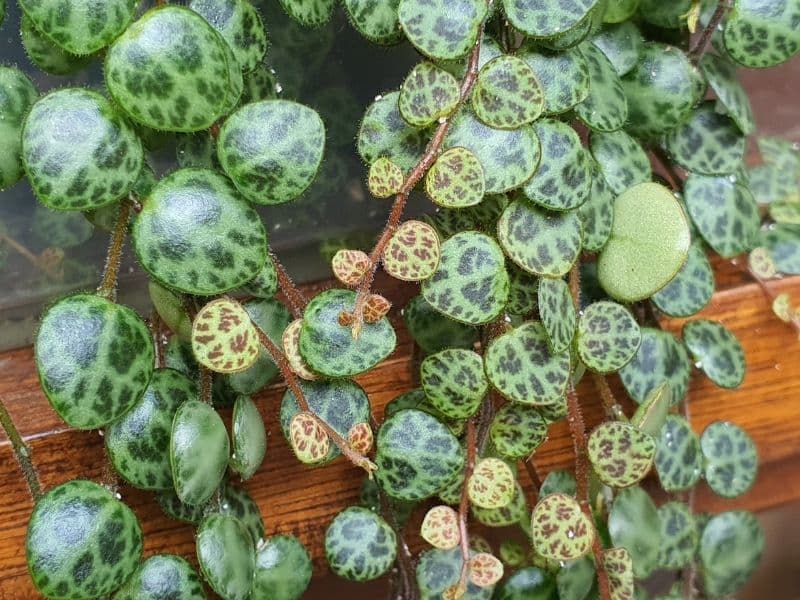
It’s not necessary to prune your string of turtles plant, but removing any dead leaves is always a good idea. Use sharp, clean scissors to trim back any leggy or overgrown stems and to remove any dead or yellowing leaves. This will encourage the plant to grow fuller and healthier. And if the vines start growing too long for your preference, you can look into propagating instead.
Also, don’t be afraid to get creative with your pruning and shape your plant into a unique and interesting design. With a little bit of patience and care, your string of turtles can become a beautiful and beloved addition to your home.
Propagation
Propagating a string of turtles plants via cuttings is an easy and straightforward way to increase your plant collection or develop plants to gift to friends. You can propagate the plant any time of year using just a few quick steps. Here’s how:
- Snip off a few cuttings just below a node using a mature mother plant and clean, sharp scissors. The cutting should be at least 3 inches long.
- Remove any leaves on the lower portion of the cutting, near where you removed the stem from the plant.
- Fill a small pot with a regular potting mix that is moist but not soggy.
- Plant the cut end of the stem into the potting mixture, ensuring at least one node falls below the soil’s surface. Dipping the stem in rooting hormone can help speed the process, but it’s usually unnecessary.
- Place the plant somewhere that gets bright, indirect light.
- Keep the soil moist but not soggy. After a few weeks, gently tug the cutting—if you feel resistance that means roots have formed and you can now care for your plant as normal.
Potting and Repotting
When it comes to potting and repotting your string of turtles, it’s important to choose a container that is slightly larger than the plant’s current pot to allow for growth. It is recommended to use a container that has drainage holes to prevent water from accumulating in the pot.
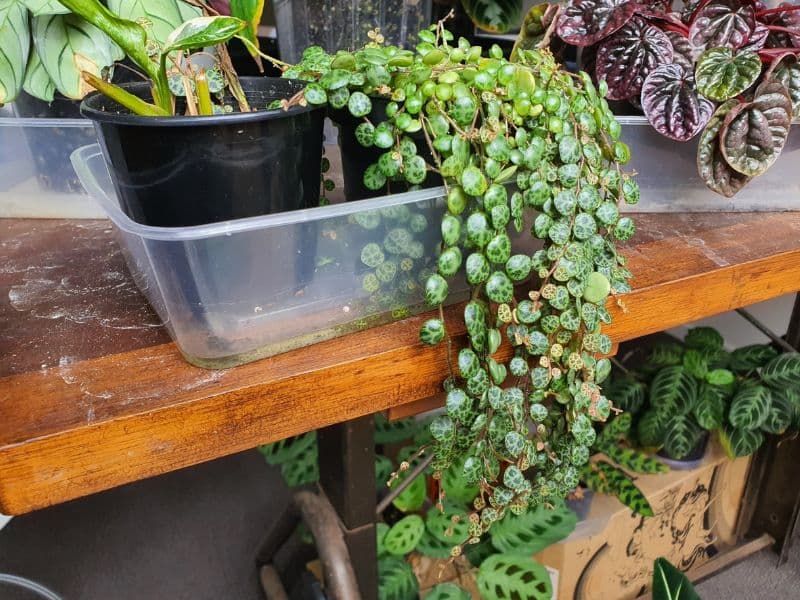
The soil used for potting should be well-draining and rich in nutrients. A mixture of peat moss, perlite, and vermiculite can be used to create a well-draining soil. While repotting, gently remove the plant from its current pot and loosen the roots. This will help the plant adjust to its new home and promote healthy growth.
It is important to avoid overwatering the string of turtles, as this can lead to root rot. Allow the soil to dry out slightly between waterings, and always water the plant at the base to prevent water from getting on the foliage.
Repotting should take place every 2-3 years to ensure proper growth. This will give the plant enough space to grow and thrive. String of turtles is a slow-growing plant, so it is important to be patient and not rush the process of repotting.
Pests and Diseases
While a string of turtles is generally a hardy plant, there are a few common pests and plant diseases to watch out for, like most other houseplants.
Mealybugs and spider mites are the most common pests that can affect your plant. These tiny insects can damage the leaves of your string of turtles, causing them to yellow and wilt.
To prevent these pests, be sure to keep the plant’s leaves clean by wiping them down with a damp cloth regularly. If you do notice an infestation, use an insecticidal soap or neem oil to get rid of the pests.
Root rot, caused by overwatering, is the most common disease that affects turtles. This disease occurs when the roots of the plant are constantly sitting in water, causing them to rot and die.
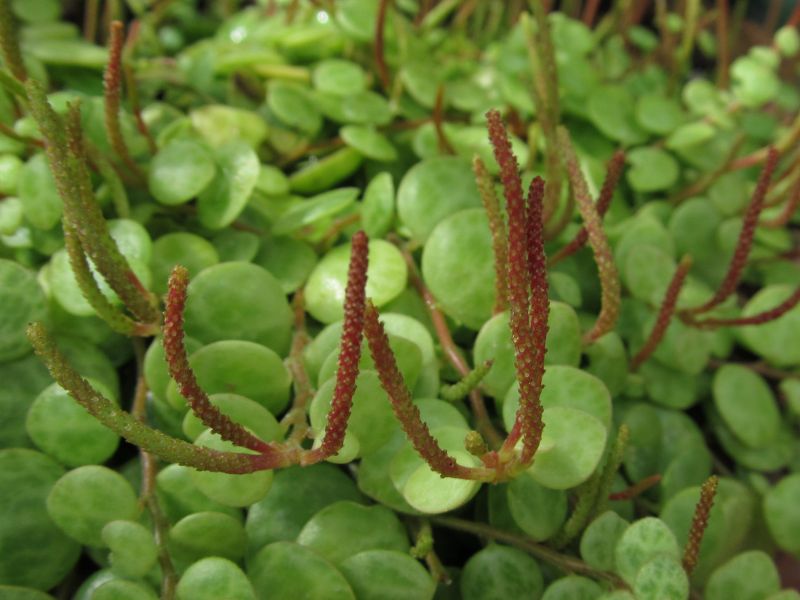
Symptoms of root rot include yellowing leaves, wilting, and a foul odor coming from the soil.
To prevent root rot from occurring, be sure to avoid overwatering your string of turtles. Allow the soil to dry out slightly between waterings and use well-draining soil to ensure proper drainage.
In addition to mealybugs, spider mites, and root rot, there are a few other pests and diseases that can affect your string of turtles.
Scale insects, which are small, oval-shaped insects that attach themselves to the leaves and stems of the plant, can also cause damage. To get rid of scale insects, use a cotton swab dipped in rubbing alcohol to wipe them off the plant.
Powdery mildew, a fungal disease that appears as a white powdery substance on the leaves, can also be a problem. To prevent powdery mildew, be sure to provide good air circulation around your plant and avoid getting the leaves wet when watering.
Now that you know how to prevent and treat common pests and plant diseases for your string of turtles, you can enjoy this unique and interesting plant without any worries. With its beautiful foliage and easy care requirements, string of turtles is sure to be a conversation starter in your home and a joy to care for.
Find Where to Buy the Best String of Turtles (Peperomia prostrata)




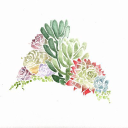
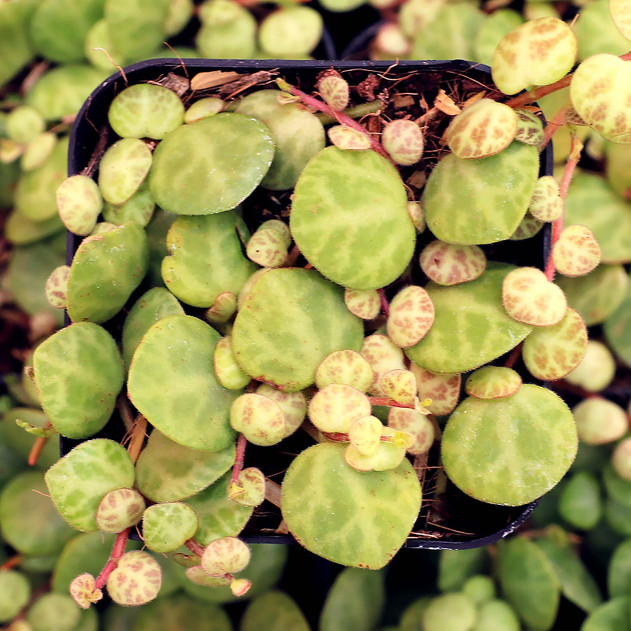












Leave a Reply